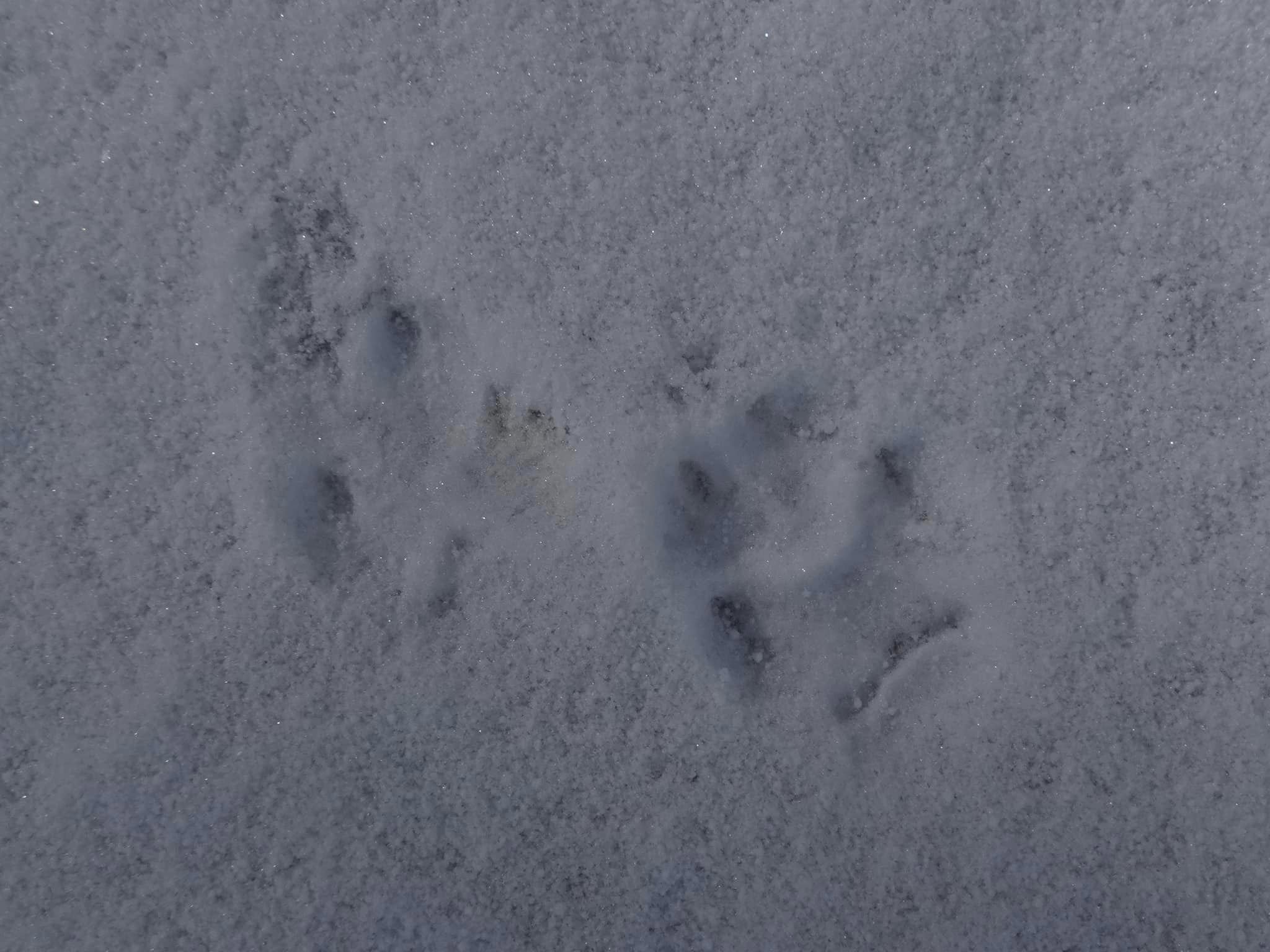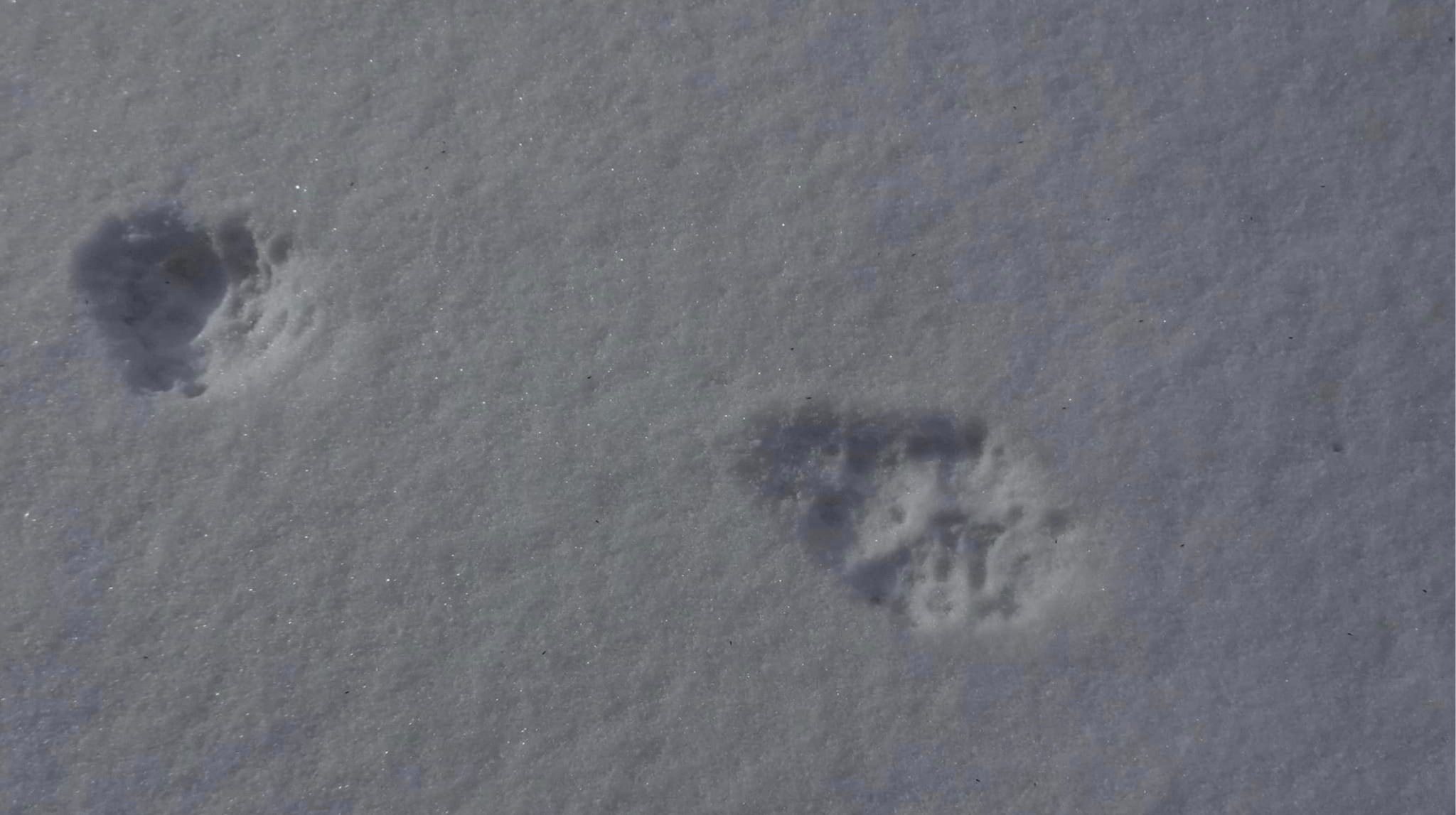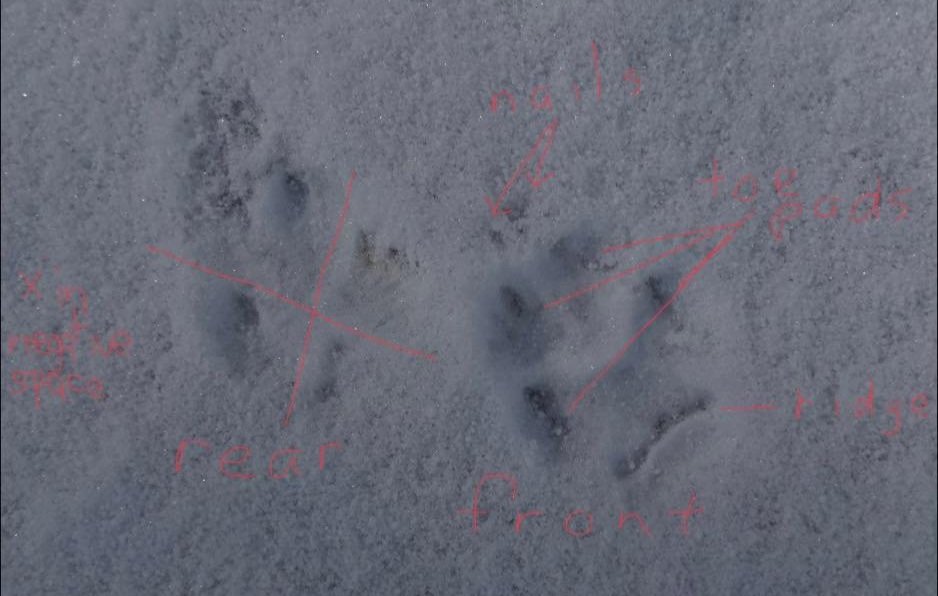Wildlife Wednesday — Anatomy of a Red fox track
By Andy Ames
Foxes are one of those animals that we rarely see but the tracks they leave behind alert us to their presence. Red fox tracks can be confused with those of coyotes. Both are similar shape and size, although the fox’s tend to be a little smaller. Red foxes’ tracks tend to be less than 2” across, coyotes’ a little over. The weight of the animal, and thus the depth of the track, is also a big difference. Red foxes are quite petite, tipping the scales at less than 15 pounds, while coyotes can weigh twice that amount. I find foxes primarily travel solo and occasionally in pairs. Coyotes vary more in that regard, often solo, but it is not uncommon to see tracks of 2 or even several together. So while we may not actually see foxes in person, we can still learn a lot about them by observing their tracks.
Red fox tracks are distinctly canine — overall a symmetrical, oval shape longer than they are wide, nail marks in front of each toe pad, an “X” can be drawn on the negative space between the outer toe pads and heel pad, and front prints larger than rear. What sets the Red fox tracks apart from others is the chevron, or ridge on the heel pad. Can you pick out all these characteristics in these prints?
The bottoms of Red fox’s feet are covered with hair which can make them a little blurry or hard to distinguish, depending on the surface.
The Red fox has two main gaits — the trot, where the rear foot lands directly, or nearly directly, where the front foot was, and the side trot. In the side trot the rear foot lands a little in front and to the side of the front track. Here you can see how a fox transitioned from the direct register trot to a side trot as it crossed a frozen pond.
Characteristics of Red fox tracks.
Not all Red foxes are red. Some Red foxes can be black, or grey, or silverish. All have a white tipped tail, however.





